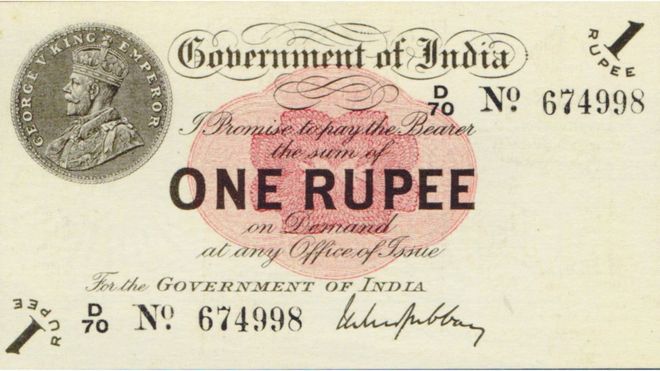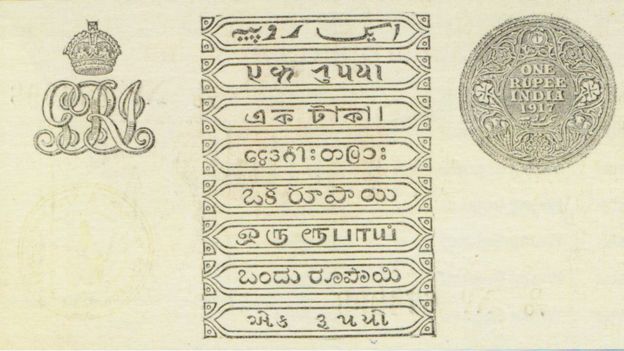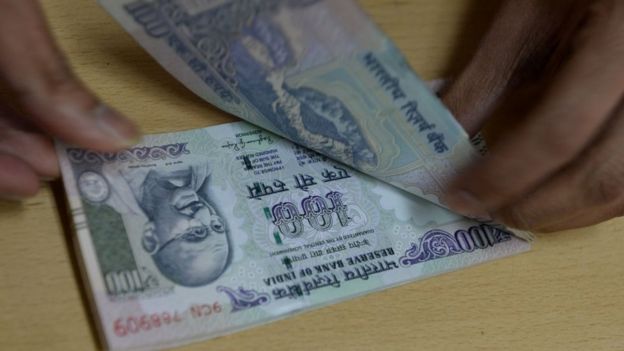India's first one rupee paper was released on November 30, 1917.
A century later, many things have changed. One rupee sheets that are constantly printed reflect those changes.
One rupee prints, printed for the first time, still maintain its uniqueness.
These banknotes are printed in England. In the foreground on the front side, these papers will have a picture of silver coin in the fifth George of King of England, and it will be printed on the pledge that I promise to pay a rupee at any office.
This statement would not have been made in any banknotes printed thereafter.
On its back, it would have written 'one rupee' in eight languages of India.
Sushil Kumar Agrawal, Chief Executive Officer of the Electedejardt Online Museum, says the UK government has started printing one rupee notes in the 19th century.
Prior to this, these banknotes were introduced in West Bengal under UK's East India Company.
However, in 1917, only one rupee papers were printed. Soon afterwards, the battlefield and the franchise, Nova Goa and the franchise named their 'Ruby' and released their own versions.
However, some princely states in India had their own currency. In these, the states of Haryana and Kashmir were allowed to print their own rupees.
During World War II, special banknotes were given to India by Burma. The Indian government issued a special series of Persian rupees notes.
Interestingly, these rupees have been used in Pakistan for some time after India's Pakistan Partition.
After Independence, the national symbol with the three lions and the wheel of the aboard changed the old state identity. Only one rupee sheets are no exception. This sheet has changed.
In the last 100 years, 28 designs have been put in a number of ways, with 125 banknotes sold in circulation, according to electrodev.
Low value but rich price
After the cash flow in India, one rupee coins or sheets have lost the basic privilege in real transactions. But the importance of one rupee sheets has increased in these years.
There are many interesting facts about a banknote in India.
In Indian money, one rupee is very low, but more important.
The Reserve Bank of India publishes all rupee notes directly by the Government of India only.
That is why, in this banknotes, the 'Indian Government' will be printed. The Reserve Bank Governor has signed the other notes to sign the Finance Secretary.
Although the value is just one rupee, the printing cost is very high. That's why the Indian government stopped printing a rupee sheet in 1995.
But in the year 2015, these new notes have been issued, with new papers published this year.
However, its circulation is low. So old money or coins collectors are looking for this.
Even when former Prime Minister Manmohan Singh was the finance secretary, it is difficult to find a rupee sheet signed.
Such rarely a rupee sheets are sold at a higher price. There are thousands of buyers who give it a thousand rupees.
At the beginning of this year, one of the printed copies printed in 1985 was sold for a market price of 2 lakh 75 thousand rupees.
Also, in the Dadwala auction, 100 rupees sheets printed in 1944, was bid for 1 lakh and 30 thousand rupees.
What do you buy with just a buck? The answer is, according to which kind of a rupee you have.



Comments
Post a Comment